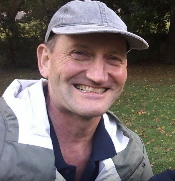Contrary to their PR blurb Duke University, Michigan were not the first in the world to aim to put, or to put all their HE courses online: the Open University got there 16 years earlier. We too often forget this in the UK as universities such as Coventry (with OU staff running the team) doing the same.
And now everyone doing it.
Taking up a course with the OU in early 2001, the MA in Open and Distance Learning (MAODL) I got a cardboard box containing some text books and DVDs. We went online for a threaded noticeboard thingey.
Picking up the MA in Open and Distance Education (MAODE) a decade later and going on to graduate in 2013 everything was online: a variation (not much changed) of this blog cum noticeboard platform, Cloudworks, a version of Meet or Zoom technically a decade ahead of its time, though sometimes like dragging yourself through brambles in a Guernsey jumper.
We had Cloudworks, others no offer Padlet, Jamboard and Trello.
Having an idea for something is never good enough; having the resources, team skills and even power or energy to make it happens is what counts.
And then which platform comes to rule over them all?
Gilly Salmon's five stages of e-tivities still applies, perhaps more so. Students (and colleagues) need quite a bit of 'onboarding' to feel confident enough with and familiar enough with a new platform in order to be able to contribute. Some get left behind, some run with it to the point of taking over.
The trick is to return to the platform over and over again. Help people use it, master it and enjoy it. Leave no one behind.
For me a new platform needs a mentor or coach, a voice I can trust to talk me through step by step showing me how this new platform applies to me. I then need to go over this repeatedly, take baby steps, make mistakes, take constructive feedback, and then make my contribution a weekly, if not a daily habit.
Another platform is never the answer. Having colleagues and students each wishing to show off and use the latest 'thing' they have found does not work either. There has to be common ground.
I feel a platform as simple as this OU blog is common ground. It does what is required. Even though I have WordPress blogs, I far prefer to post here. It is simple. It is immediate. I don't need to be pushing it on social media. I can be private to me, limited to those logged-in or shared to the world.
